Monumental Buddhist architecture in the modern era
Modern Buddhist architecture represents both a continuation of ancient sacred traditions and a dynamic response to contemporary cultural, political, and spiritual contexts. Since the late 20th century, monumental Buddhist structures have been built across Asia and beyond, often blending traditional design principles with modern materials, new aesthetic sensibilities, and globalized functions. These projects express a range of motivations, from devotional piety and national identity to cultural diplomacy and religious revival.

Tsz Shan Monastery, Hong Kong, by Li Ka-shing Foundation. Source: Wikimedia Commonsꜛ (license: CC BY-SA 4.0)
What distinguishes this recent wave of Buddhist architecture is not only its scale and technological ambition but also its engagement with tourism, education, and public symbolism. Temples, museums, meditation centers, and colossal statues have emerged as multi-functional spaces, designed to inspire awe, facilitate pilgrimage, attract visitors, and cultivate Buddhist values in a rapidly changing world.
In this post, we explore the forms, meanings, and contexts of modern monumental Buddhist architecture, focusing on major examples from across We investigate how sacred architecture continues to shape and reflect the evolving landscapes of Buddhism today, while engaging with both local traditions and global trends.
Architectural themes and motivations
In the modern era, Buddhist architecture has evolved to address a variety of themes and motivations, reflecting the diverse contexts in which it is situated. Some of the key themes include:
Continuity and innovation
Modern Buddhist architecture balances reverence for historical precedent with creative reinterpretation. Many contemporary structures reference classical elements such as the stūpa, pagoda, Mahāvīra Hall, or monastic courtyard layout. These familiar forms help visually signal religious continuity and cultural authenticity. At the same time, architects often adopt minimalist aesthetics, novel geometries, and unconventional materials such as concrete, glass, or steel to communicate new spiritual ideals or adapt to urban settings. The result is a hybrid architectural language that links past and present, sacred symbolism and modern design.
Projects like Tadao Ando’s Hill of the Buddha or the Buddha Tooth Relic Temple in Singapore exemplify this dialogue between tradition and innovation. The former encases a traditional seated Buddha within a concrete dome and flowered earth mound, emphasizing contemplative immersion, while the latter reinterprets Tang-style ornamentation in a contemporary urban framework. This interplay allows modern Buddhist architecture to be both meditative and monumental, historically grounded yet visually forward-looking.
Patronage and purpose
The construction of monumental Buddhist architecture today involves a range of patrons and purposes. State-backed projects, such as the Lingshan Grand Buddha in China or the Global Vipassana Pagoda in India, often reflect aspirations of national identity, cultural diplomacy, or moral renewal. Private philanthropy, such as the Tsz Shan Monastery funded by Hong Kong billionaire Li Ka-shing, enables elite individuals to contribute to spiritual and cultural legacies.
Monastic organizations continue to play a vital role, especially in Southeast and East Asia, where temples are centers of education, social service, and global outreach. Institutions like Fo Guang Shan (Taiwan) and Dhammakaya (Thailand) combine traditional religious goals with public engagement, infrastructure development, and international influence. Whether motivated by devotion, heritage preservation, or soft power, these projects underscore how modern Buddhist architecture serves not only ritual needs but also broader civic, cultural, and spiritual ambitions.
Case Studies in modern Buddhist architecture
The following case studies illustrate the diversity and complexity of modern Buddhist architecture across Asia, highlighting how these structures embody contemporary spiritual aspirations while engaging with local and global contexts.
India: Global Vipassana Pagoda (Mumbai)
The Global Vipassana Pagoda, completed in 2008 near Mumbai, is one of the largest Buddhist monuments constructed in India in recent history. Inspired by the Shwedagon Pagoda in Myanmar, it features a colossal stone dome, the largest unsupported stone dome in the world, spanning over 85 m. The structure is built entirely without interior pillars, creating an unobstructed meditation hall that can seat over 8,000 practitioners at once.
Global Vipassana Pagoda, Mumbai, India. Source: Wikimedia Commonsꜛ (license: CC BY-SA 3.0)
The pagoda serves as a tribute to Sayagyi U Ba Khin and the revival of vipassana meditation in India through his student, S. N. Goenka. It houses relics of the Buddha, donated by the Burmese government, and aims to bridge the Theravāda heritage of Myanmar with India’s Buddhist revival movement. The site includes a museum, a library, and facilities for long-term meditation retreats. Its architectural symbolism, merging traditional Southeast Asian stūpa forms with modern construction techniques, embodies the transnational and devotional ethos of contemporary global Buddhism.
Singapore: Buddha Tooth Relic Temple
Completed in 2007 in Singapore’s Chinatown district, the Buddha Tooth Relic Temple is a striking example of how modern Buddhist architecture can serve religious, cultural, and urban functions simultaneously. Designed in Tang dynasty style, the temple is intended to reflect the aesthetic and doctrinal roots of Mahāyāna Buddhism, while also standing as a major public landmark in a dense and modern cityscape.

Front facade of the Buddha Tooth Relic Temple and Museum, Singapore. Source: Wikimedia Commonsꜛ (license: CC BY-SA 4.0)
At its heart, the temple houses a relic believed to be a tooth of the historical Buddha, displayed in a richly ornamented stūpa in the temple’s upper level. Surrounding this sacred core are extensive museum galleries, prayer halls, a rooftop garden, and spaces for scriptural study, cultural events, and charitable outreach. The project was privately funded, with strong support from Singapore’s Chinese Buddhist community, and integrates traditional symbolism with modern functions such as air-conditioned halls and multilingual educational exhibits.

Praying monks and nuns in the temple with laypeople seated behind them in the Hundred Dragon Hall. Source: Wikimedia Commonsꜛ (license: CC BY-SA 4.0)
The Buddha Tooth Relic Temple exemplifies how Buddhist institutions today engage with heritage presentation, pilgrimage tourism, and civic visibility — acting as both spiritual sanctuary and cultural destination.
Hong Kong: Tsz Shan Monastery
Tsz Shan Monastery, completed in 2015 in the New Territories of Hong Kong, represents one of the most ambitious and spiritually focused Buddhist construction projects in recent decades. The centerpiece of the monastery is a 76 m tall bronze statue of the Bodhisattva Guan Yin (Avalokiteśvara), one of the tallest such statues in the world. Designed to convey compassion and serenity, the statue stands above a sprawling complex dedicated to Chán Buddhist meditation, education, and public engagement.

The 76 m tall statue of the Bodhisattva Guan Yin (Avalokiteśvara) at Tsz Shan Monastery. Source: Wikimedia Commonsꜛ (license: CC BY-SA 2.0)
Funded by the Li Ka Shing Foundation, the monastery was envisioned as a gift to the public and a space for personal spiritual reflection, regardless of one’s religious background. The architecture integrates Tang dynasty aesthetics with modern construction techniques, emphasizing open courtyards, landscaped gardens, water features, and contemplative paths. The site also includes a Buddhist Art Museum, Dharma halls, and spaces for guided meditation.

Bell tower of the temple. Source: Wikimedia Commonsꜛ (license: CC BY-SA 4.0)
Tsz Shan Monastery embodies the ideals of Buddhist humanism, interfaith openness, and philanthropic vision. Its expansive yet tranquil layout, focus on mindfulness, and emphasis on spiritual accessibility reflect a contemporary interpretation of Buddhist practice rooted in tradition but attuned to the globalized world.

Pond at Tsz Shan Monastery. Source: Wikimedia Commonsꜛ (license: CC BY-SA 2.0)
Taiwan: Fo Guang Shan Buddha Museum
The Fo Guang Shan Buddha Museum, inaugurated in 2011 in Kaohsiung, Taiwan, is a monumental cultural and religious complex that embodies the expansive vision of the Fo Guang Shan monastic order. Designed to enshrine a tooth relic of the historical Buddha, the museum integrates traditional architectural motifs with contemporary spatial planning and public engagement.

Fo Guang Shan Buddha Memorial Center, Kaohsiung, Taiwan. Source: Wikimedia Commonsꜛ (license: CC BY-SA 4.0)
The site consists of a vast plaza leading to a towering 108 m seated Buddha statue, surrounded by eight pagodas that symbolize the Noble Eightfold Path. The museum itself houses multiple themed galleries, prayer halls, meditation spaces, and facilities for interfaith dialogue and global Buddhist outreach. Its design draws on Tang dynasty aesthetics but employs modern materials and engineering to accommodate mass tourism, international exhibitions, and digital interpretation.
Under the leadership of Venerable Master Hsing Yun, the museum reflects the Fo Guang Shan movement’s emphasis on Humanistic Buddhism, which integrates social service, education, and cross-cultural communication. As such, the Buddha Museum functions not only as a sacred space for veneration and pilgrimage but also as a global node for cultural diplomacy and Buddhist education.
Japan: Hill of the Buddha
The Hill of the Buddha, designed by renowned Japanese architect Tadao Ando and completed in 2015, is a striking example of how minimalist aesthetics and spiritual symbolism can be harmoniously integrated in modern Buddhist architecture. Located at the Makomanai Takino Cemetery in Sapporo, Hokkaido, the structure features a 13.5 m tall stone Buddha statue that had previously stood alone in an open field. Ando’s intervention involved enveloping the statue within a gently sloped circular mound planted with 150,000 lavender plants, transforming the setting into a contemplative and immersive landscape.
.jpg/1024px-頭大仏(2024).jpg)
Buddha statued in the Hill of the Buddha, Sapporo, Japan, by Tadao Ando. Source: Wikimedia Commonsꜛ (license: CC BY-SA 4.0)
Visitors enter the hill through a long, dimly lit tunnel, which opens dramatically at the base of the statue, exposing only the upper part of the Buddha’s head to the sky. This spatial choreography, from darkness to light, from enclosure to openness, is meant to evoke a meditative passage, both physically and spiritually. The use of concrete, natural light, and seasonal vegetation underscores the architect’s Zen-influenced design philosophy, emphasizing quietude, impermanence, and sensory experience.

Entrance to the tunnel to the Buddha statue. Source: Wikimedia Commonsꜛ (license: CC BY-SA 2.0)
The Hill of the Buddha is not a monastic center or pilgrimage hub in the traditional sense, but it serves as a profound site of spiritual reflection and architectural pilgrimage. It exemplifies how Buddhist themes can be reinterpreted in contemporary contexts, blending ancient symbolism with modern form to create a space of universal resonance.
Thailand: Wat Phra Dhammakaya and Wat Rong Khun
Wat Phra Dhammakaya, located north of Bangkok, is one of the largest Buddhist temple complexes in the world and a prominent example of modern Buddhist monumentalism. Founded in the 1970s by Phra Dhammachayo and his followers, it emphasizes Vipassana meditation and merit-making, supported by a large lay following. Its central stūpa, shaped like a UFO or giant lotus, is designed to house one million Buddha images and accommodate hundreds of thousands of devotees. The temple has attracted both admiration and criticism for its scale, financial practices, and high-profile controversies involving its leadership. Despite this, it continues to play a major role in global Buddhist outreach, meditation promotion, and digital dissemination of teachings.
Chedi (stūpa) of Wat Phra Dhammakaya, Thailand. Source: Wikimedia Commonsꜛ (license: CC BY-SA 4.0)

Aerial view of the newer areas of Wat Phra Dhammakaya. Source: Wikimedia Commonsꜛ (license: CC BY-SA 4.0)
Wat Rong Khun, located near Chiang Rai and designed by Thai artist Chalermchai Kositpipat, offers a starkly different take on contemporary Buddhist architecture. Begun in 1997 and still under construction, this privately funded temple is an eclectic and surrealist reinterpretation of Buddhist cosmology. Its all-white exterior represents the purity of the Buddha, while mirror fragments embedded in the façade symbolize spiritual clarity. Inside and outside, the temple features unconventional iconography, including pop culture figures and apocalyptic imagery, used to convey moral and karmic lessons. Wat Rong Khun challenges traditional aesthetics while inviting new modes of spiritual engagement through visual storytelling and artistic innovation.

Wat Rong Khun, Thailand. Source: Wikimedia Commonsꜛ (license: CC BY-SA 3.0)
Myanmar and Bhutan: Buddha Dordenma, Maha Bodhi Tahtaung, and Kyaikhtiyo enhancements
The Buddha Dordenma, completed in 2015 near Thimphu, Bhutan, is one of the tallest seated Buddha statues in the world, standing 54 m high and cast in bronze and gilded in gold. Commissioned to celebrate the centenary of the Bhutanese monarchy, the statue embodies the kingdom’s commitment to preserving its Mahāyāna-Vajrayāna heritage while promoting national unity and spiritual well-being. The base houses thousands of smaller Buddha statues and meditation halls, serving both as a pilgrimage site and a symbol of Bhutanese identity.
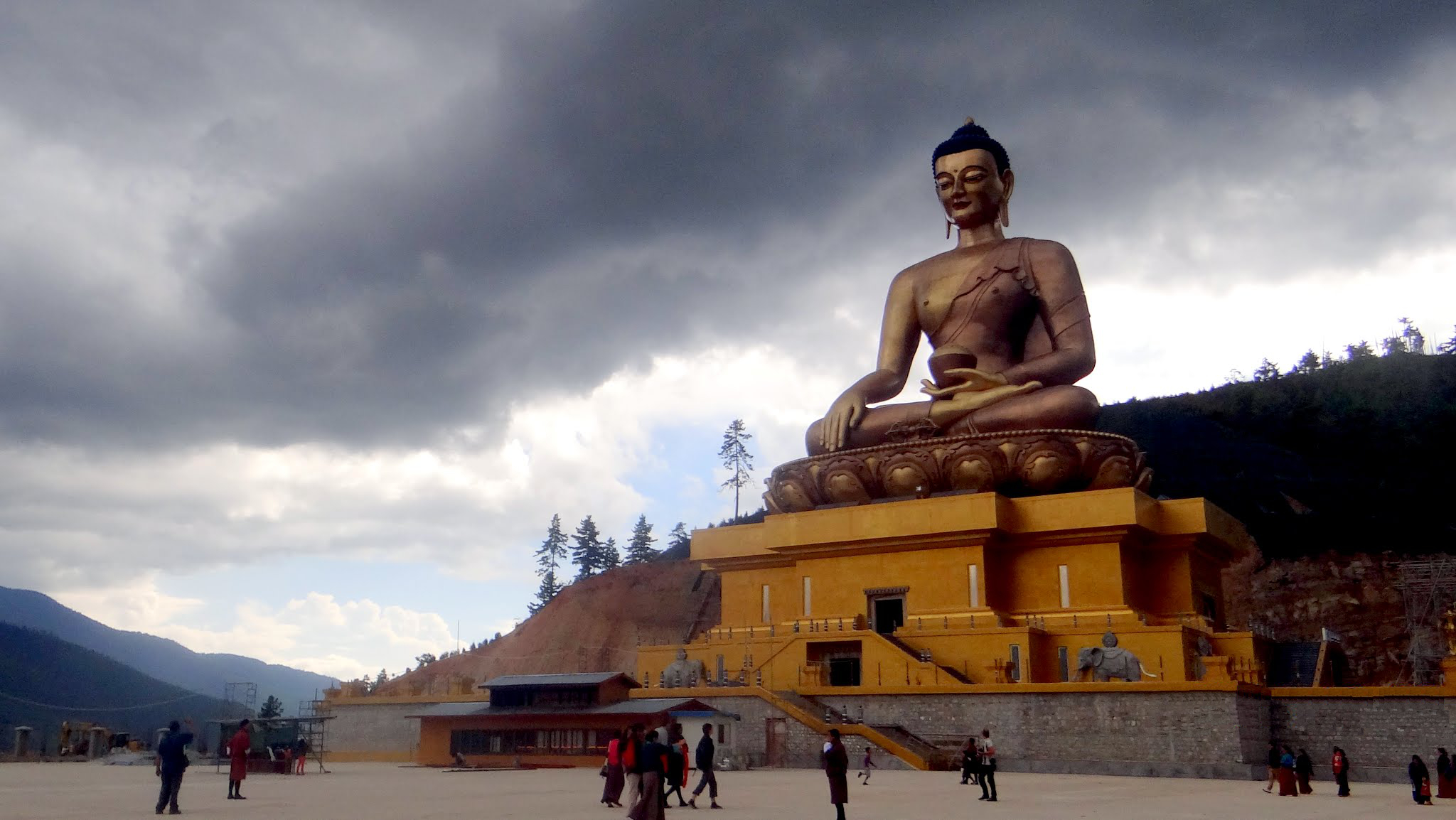
Buddha Dordenma statue, Bhutan. The height of the statue is 54 m and it was built between 2006 and 2015. Source: Wikimedia Commonsꜛ (license: CC BY-SA 4.0)
In Myanmar, monumental Buddhist architecture has also continued into the modern period. Maha Bodhi Tahtaung, near Monywa, features some of the largest Buddha images in the country, including a 116 m standing Buddha (Laykyun Sekkya) and an immense reclining Buddha. These constructions reflect a national effort to reaffirm Theravāda Buddhism in public life and to provide sites for merit-making and religious education.
 Reclining Buddha statue (90 m long) at the Maha Bodhi Tahtaung complex, Myanmar. Source: Wikimedia Commonsꜛ (license: CC BY-SA 2.5)
Reclining Buddha statue (90 m long) at the Maha Bodhi Tahtaung complex, Myanmar. Source: Wikimedia Commonsꜛ (license: CC BY-SA 2.5)
Enhancements to existing pilgrimage sites, such as the Kyaikhtiyo Pagoda (Golden Rock), have included improved infrastructure, expanded viewing platforms, and increased access for domestic and international pilgrims. These developments aim to balance religious devotion with tourism, making Myanmar’s sacred geography more accessible while reinforcing its Buddhist cultural identity in the global age.

China: Lingshan Grand Buddha and Nanhai Guanyin
The Lingshan Grand Buddha, completed in 1996 near Wuxi in Jiangsu Province, is one of the tallest bronze Buddha statues in China, standing at 88 m. The figure depicts a standing Śākyamuni Buddha and dominates a carefully designed spiritual landscape that includes a pilgrimage plaza, a Brahma Palace, and other symbolic structures. The site reflects not only devotional practice but also state-sponsored efforts to revive and promote Buddhism as part of Han cultural heritage.
 Grand Buddha at Ling Shan, China. The height of the statue is 88 m and it was built in 1996. The statue is made of bronze and is located in a scenic area with a large lotus pond. The site is a popular pilgrimage destination for Buddhists. Source: Wikimedia Commonsꜛ (license: CC BY-SA 3.0)
Grand Buddha at Ling Shan, China. The height of the statue is 88 m and it was built in 1996. The statue is made of bronze and is located in a scenic area with a large lotus pond. The site is a popular pilgrimage destination for Buddhists. Source: Wikimedia Commonsꜛ (license: CC BY-SA 3.0)
Nearby, the Nanhai Guanyin statue in Hainan stands 108 m tall and depicts the Bodhisattva Avalokiteśvara (Guanyin) in three aspects, each facing a different direction to represent protection, compassion, and wisdom. Completed in 2005 at the Nanshan Cultural Tourism Zone, the statue sits atop a lotus pedestal on an offshore platform connected by a causeway.
 Guanyin of Nanshan, Hainan, China. The height of the statue is 108 m and it was built in 2005. The statue is made of bronze and is located on a scenic island. Source: Wikimedia Commonsꜛ (license: CC BY-SA 3.0)
Guanyin of Nanshan, Hainan, China. The height of the statue is 108 m and it was built in 2005. The statue is made of bronze and is located on a scenic island. Source: Wikimedia Commonsꜛ (license: CC BY-SA 3.0)
Both statues are part of larger religious-tourism complexes supported by local governments and state-aligned Buddhist organizations. They reflect a contemporary resurgence of Han Buddhist identity in China, blending religious devotion with symbolic nation-building and regional economic development. While sometimes criticized for their scale or commercial aspects, these sites continue to attract millions of pilgrims and visitors annually.
Vietnam: Bai Dinh Temple Complex
Located in Ninh Bình Province, the Bai Dinh Temple Complex is the largest Buddhist complex in Vietnam and among the most expansive in Southeast Asia. Originally founded in the 11th century, it underwent major expansion beginning in 2003 under state and monastic sponsorship. The modern complex blends traditional Vietnamese architectural elements with monumental scale and updated infrastructure, designed to accommodate millions of pilgrims annually.
 Bai Dinh Temple Complex, Vietnam. The complex is the largest Buddhist complex in Vietnam and among the most expansive in Southeast Asia. The site includes a large stūpa, a statue of the Buddha, and many smaller shrines and temples. Source: Wikimedia Commonsꜛ (license: CC BY-SA 3.0)
Bai Dinh Temple Complex, Vietnam. The complex is the largest Buddhist complex in Vietnam and among the most expansive in Southeast Asia. The site includes a large stūpa, a statue of the Buddha, and many smaller shrines and temples. Source: Wikimedia Commonsꜛ (license: CC BY-SA 3.0)
Key features include the 13-story stūpa, the largest bronze Buddha statue in Vietnam, and extensive rows of Arhat statues lining covered walkways. Traditional motifs such as curved tiled roofs, wooden beams, and ornamental stonework are scaled up and repeated across a vast ritual and ceremonial landscape. The complex also integrates ecological design principles, set against the dramatic limestone karst formations of the Tràng An Scenic Landscape.

Bai Dinh functions as both a devotional space and a national cultural symbol. It exemplifies how modern Buddhist architecture in Vietnam is used to express heritage, promote tourism, and support the revival of Buddhism’s public presence in a rapidly developing society.
South Korea: Tongdo-sa and Haein-sa restoration and expansion
Tongdo-sa and Haein-sa are two of Korea’s most venerated Buddhist temples, with histories dating back over a millennium. Both are designated UNESCO World Heritage Sites as part of the “Sansa, Buddhist Mountain Monasteries in Korea” listing. In recent decades, they have undergone careful restoration and expansion efforts to balance historical preservation with the living needs of contemporary monastic and lay communities.
 The Tongdo-sa temple complex, South Korea. Shown are the Gate of Non-Judgment (left), Hall of Kindness (center) and Youngsanjeon (right) Three-story Stone Pagoda (center foreground). Source: Wikimedia Commonsꜛ (license: CC BY-SA 3.0)
The Tongdo-sa temple complex, South Korea. Shown are the Gate of Non-Judgment (left), Hall of Kindness (center) and Youngsanjeon (right) Three-story Stone Pagoda (center foreground). Source: Wikimedia Commonsꜛ (license: CC BY-SA 3.0)
Tongdo-sa, known as the “temple without a Buddha” due to its enshrined relics rather than images, has focused on preserving its central reliquary structures while expanding educational and residential facilities for monks. Haein-sa, home to the Tripitaka Koreana, the world’s most complete woodblock edition of the Buddhist canon, has incorporated climate-controlled archives and enhanced visitor access through new museums and interpretation centers.
 Main hall of the Haein-sa, South Korea. The temple is known for its beautiful architecture and serene surroundings. The temple is a UNESCO World Heritage Site and is considered one of the most important Buddhist temples in Korea. Source: Wikimedia Commonsꜛ (license: CC BY-SA 2.0)
Main hall of the Haein-sa, South Korea. The temple is known for its beautiful architecture and serene surroundings. The temple is a UNESCO World Heritage Site and is considered one of the most important Buddhist temples in Korea. Source: Wikimedia Commonsꜛ (license: CC BY-SA 2.0)
These restoration projects reflect the dual aim of honoring Korea’s Buddhist heritage while ensuring that temples remain active sites of practice, pilgrimage, and cultural education. They serve as models for integrating ancient sacred space with modern infrastructure, making Korean Buddhist architecture a vital bridge between past tradition and present vitality.
Design and meaning in contemporary Buddhist architecture
Modern Buddhist architecture is not merely a matter of aesthetics or engineering; it is deeply intertwined with the spiritual, cultural, and social dimensions of contemporary Buddhism. The design and meaning of these structures are informed by a variety of factors, including religious symbolism, community engagement, and environmental considerations.
Spatial experience
Contemporary Buddhist architecture places strong emphasis on how visitors engage with sacred space — not just visually, but physically and emotionally. Designers often choreograph movement through paths, tunnels, stairs, and courtyards to evoke symbolic or meditative experiences. At sites like the Hill of the Buddha, movement through darkness into light mirrors the internal passage from ignorance to awakening. Open vistas, curved walkways, and central icons become tools for guiding contemplation and sensory immersion.
Gardens, water features, and floral landscaping are frequently employed not merely as decorative elements, but as symbolic gestures. Lotus ponds, lavender fields, and tree-lined cloisters evoke purity, impermanence, and spiritual progression. Architectural enclosures, whether stone walls, earthen mounds, or modern glass partitions, serve to focus attention inward, supporting rituals of mindfulness and reflection.
Global Buddhism and architectural export
Modern Buddhist architecture has also expanded far beyond its Asian heartlands. In countries like the United States, Australia, Brazil, and France, Buddhist institutions have commissioned temples, meditation halls, and cultural centers that blend local architectural codes with traditional Buddhist forms. Organizations such as Fo Guang Shan and Sōka Gakkai have built expansive urban centers and museums that function as religious, educational, and diplomatic platforms.
These structures often serve diaspora communities and attract new converts, functioning as cultural anchors and public symbols of Buddhism’s modern global identity. They reflect an evolving Buddhist aesthetic that is adaptive, inclusive, and cross-cultural — reshaping the role of the temple in the age of international migration, interfaith dialogue, and digital outreach.
Challenges and critiques
While modern monumental Buddhist architecture has generated admiration for its scale, ambition, and creativity, it has also provoked criticism and debate. One key concern is the question of authenticity. Critics argue that certain projects, particularly those driven by state agendas or corporate sponsorship, may prioritize spectacle over spiritual depth, substituting mass appeal for contemplative integrity. The use of lavish materials, ambitious infrastructure, and high-profile publicity campaigns can blur the line between veneration and commodification, raising questions about whether these projects reflect genuine religious values or cultural branding.
Commercialization is also a recurring issue, particularly in sites that integrate shopping zones, entertainment spaces, and fee-based access to sacred areas. While such developments may support financial sustainability, they can compromise the sacred atmosphere and shift the focus from devotion to tourism.
Environmental and economic concerns further complicate the picture. Monumental construction often involves significant ecological disruption, especially in protected natural landscapes or mountain zones. The energy demands of lighting, air-conditioning, and visitor services can contradict Buddhist ecological ethics. Moreover, projects that require major public or philanthropic investment sometimes face criticism over resource allocation, particularly in regions with pressing social or developmental needs.
Despite these concerns, many modern Buddhist architectural projects strive for ethical awareness, implementing sustainability measures, engaging local communities, and preserving traditional craftsmanship. The challenge lies in balancing the spiritual and cultural aspirations of monumental architecture with the ethical principles and contemplative values at the heart of the Buddhist tradition.
Conclusion
Modern Buddhist architecture is a vivid testament to the vitality of the Buddhist tradition in a changing global landscape. From towering statues and sprawling temple complexes to minimalist meditative spaces and transnational cultural hubs, these structures illustrate how sacred architecture continues to evolve in form and function while remaining rooted in enduring values of compassion, mindfulness, and devotion.
These monumental projects are not merely visual landmarks or tourist destinations. They reflect complex interactions between spiritual aspiration, political identity, economic development, and cultural diplomacy. Whether state-funded or privately endowed, whether designed by monks or architects, modern Buddhist buildings offer new ways to engage with tradition, attract the faithful and the curious alike, and shape how Buddhism is represented on the world stage.
As case studies across Asia, and increasingly across the globe, demonstrate, Buddhist architecture remains a dynamic field of innovation and negotiation. It balances sacred symbolism with contemporary design, ritual function with public accessibility, and ancient cosmologies with new spiritual needs. In doing so, it ensures that the temple, stūpa, and statue are not relics of the past but living structures of present-day religious, cultural, and ethical imagination.
References and further reading
- Ando, Tadao, Tadao Ando: Light and Space, 2025, Phaidon Press, ISBN 978-1838669294
- Ando, Tadao, Ando: Complete Works 1975-today, 2023, Taschen America Llc, ISBN 978-3836589567
- “The Global Pagoda: Lighting a Beacon to the World, Vipassana Research Institute”, 2005, Vipassana Research Institute, Dhamma Giri, Igatpuri, India, linkꜛ
- Wikipedia article on the Fo Guang Shan Buddha Museumꜛ
- Wikipedia article on the Wat Phra Dhammakayaꜛ
- Wikipedia article on the Tongdo-saꜛ
- Wikipedia article on the Haein-saꜛ
- Steinhardt, Nancy Shatzman, Chinese traditional architecture, 1984, China Institute in America, ISBN: 978-1131320113
- Steinhardt, Nancy Shatzman, Chinese Architecture: A History, 2019, Princeton University Press, ISBN: 978-0691169989
- Wikipedia article on the Buddha Tooth Relic Temple and Museumꜛ
- Wikipedia article on the Grand Buddha at Ling Shanꜛ

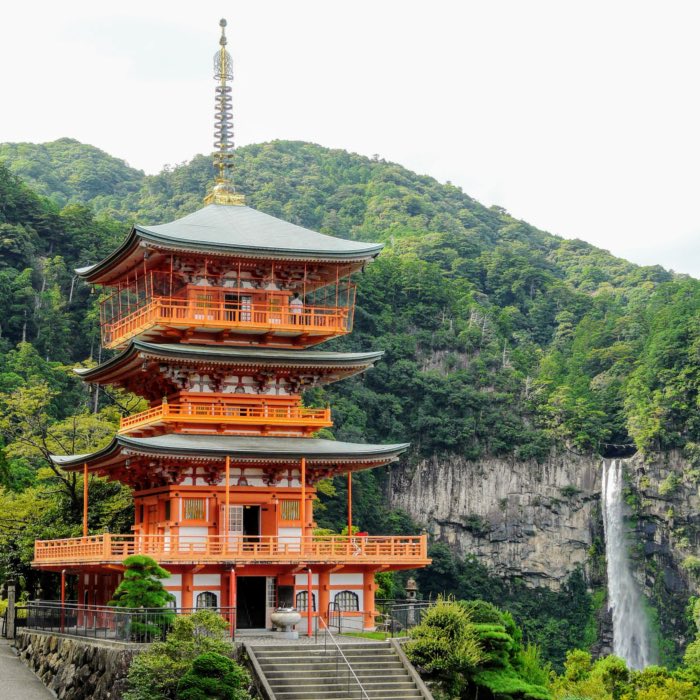
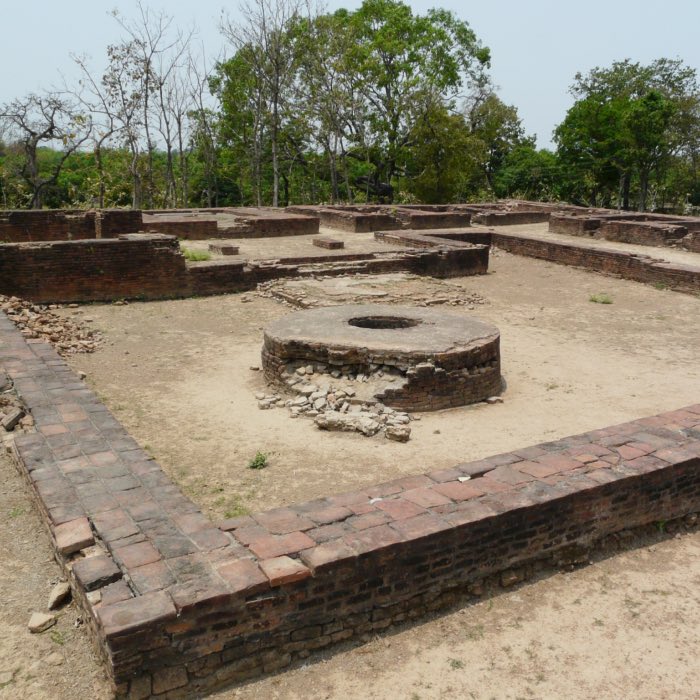






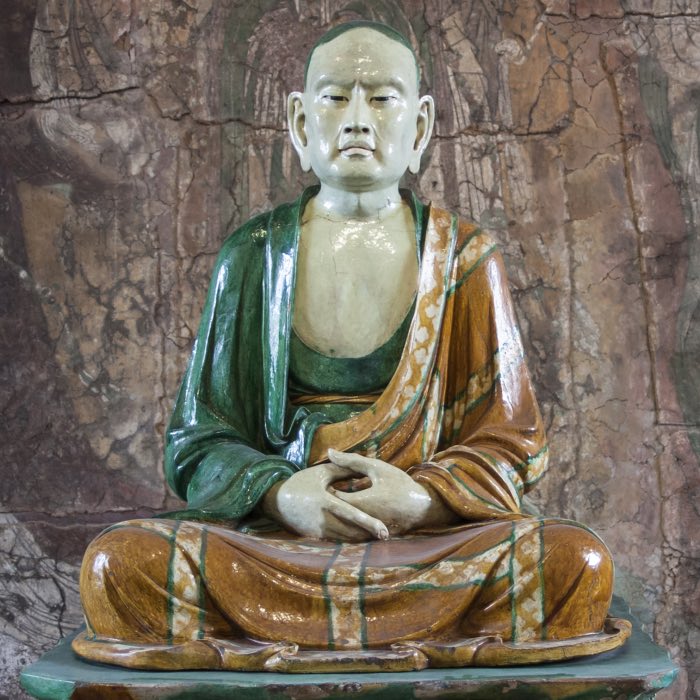

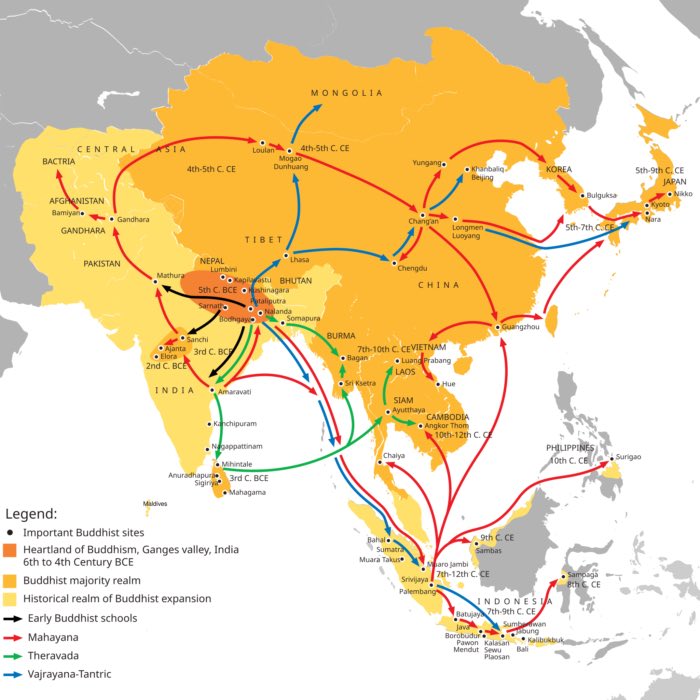

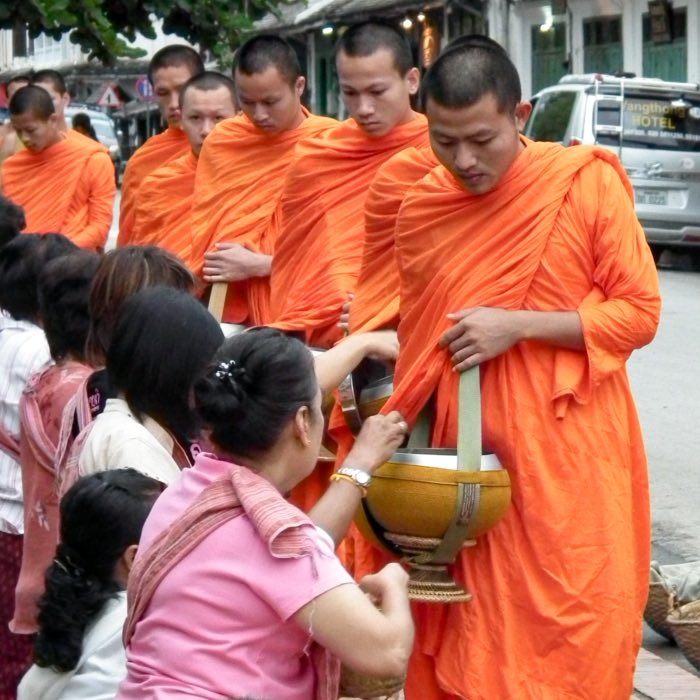
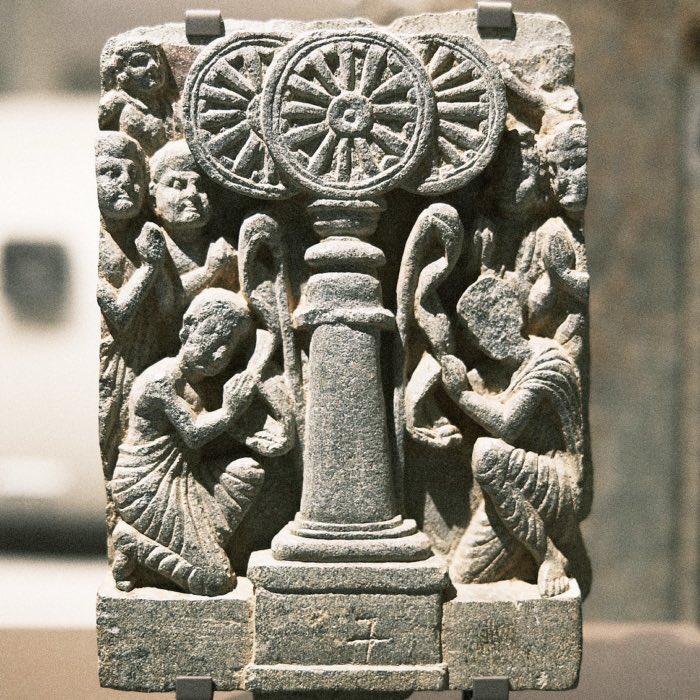
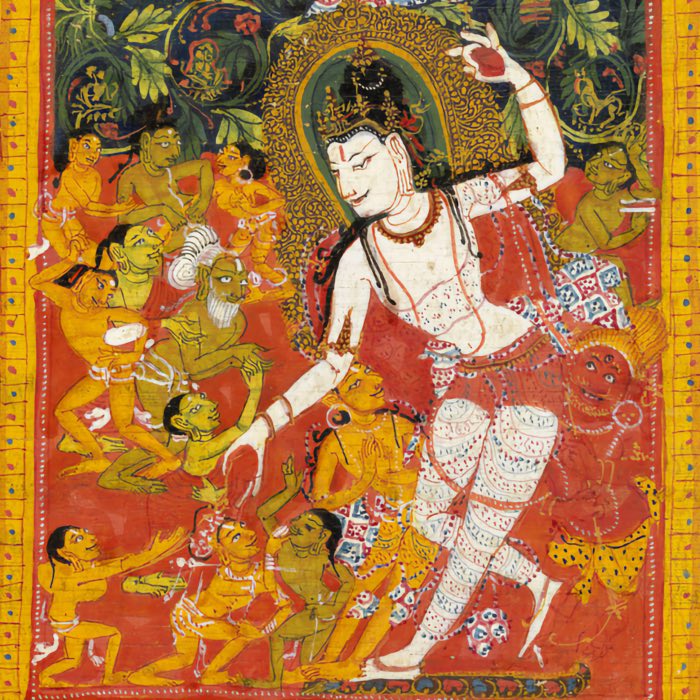


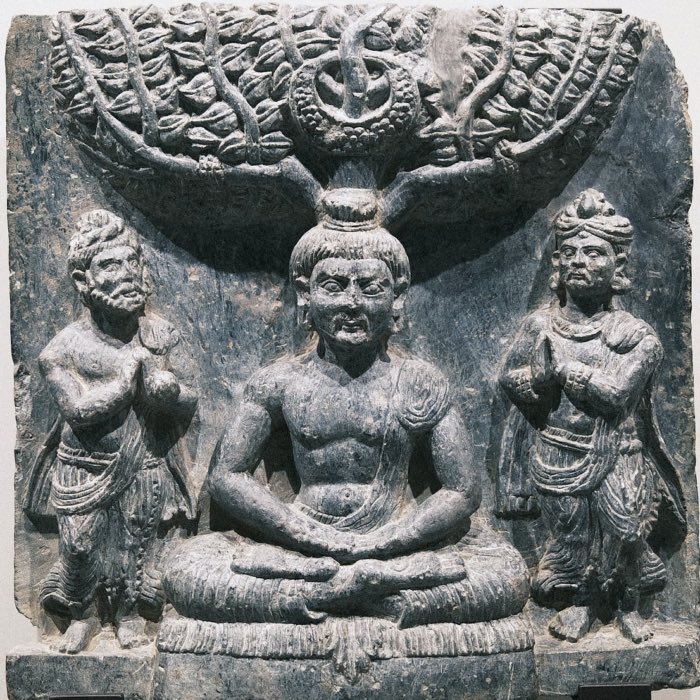
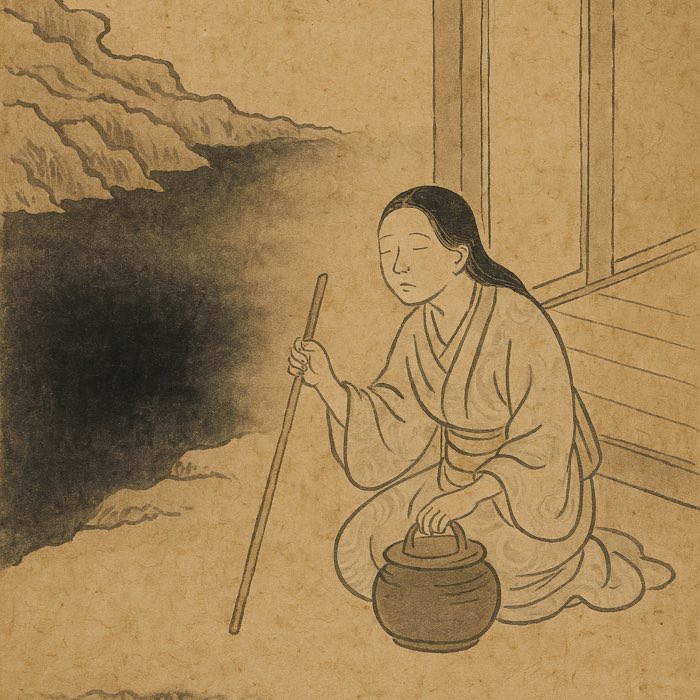

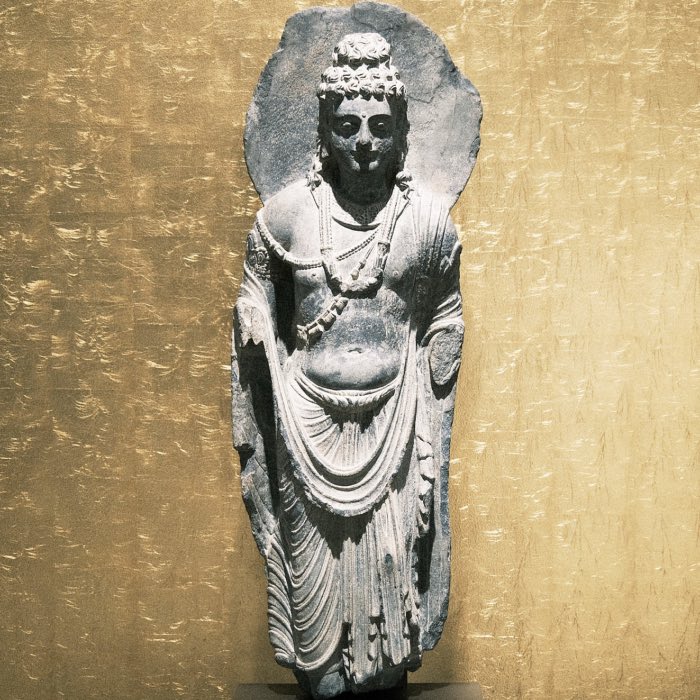



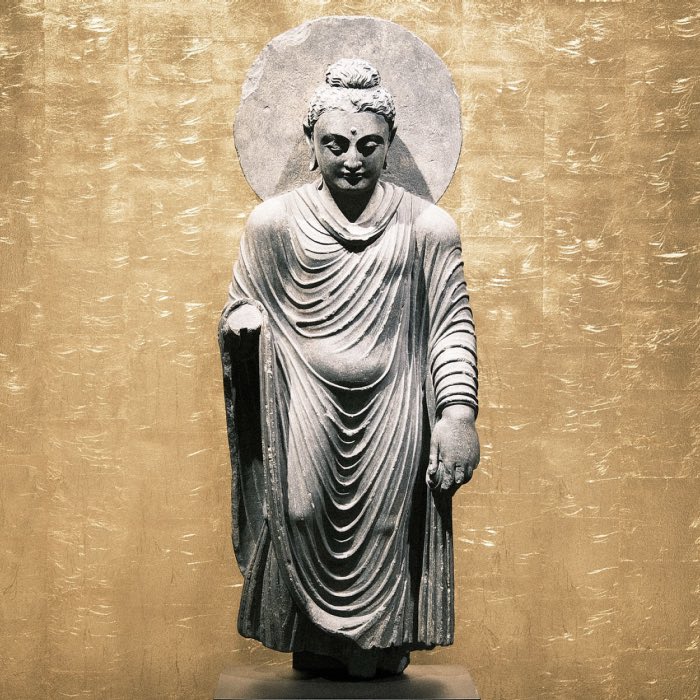

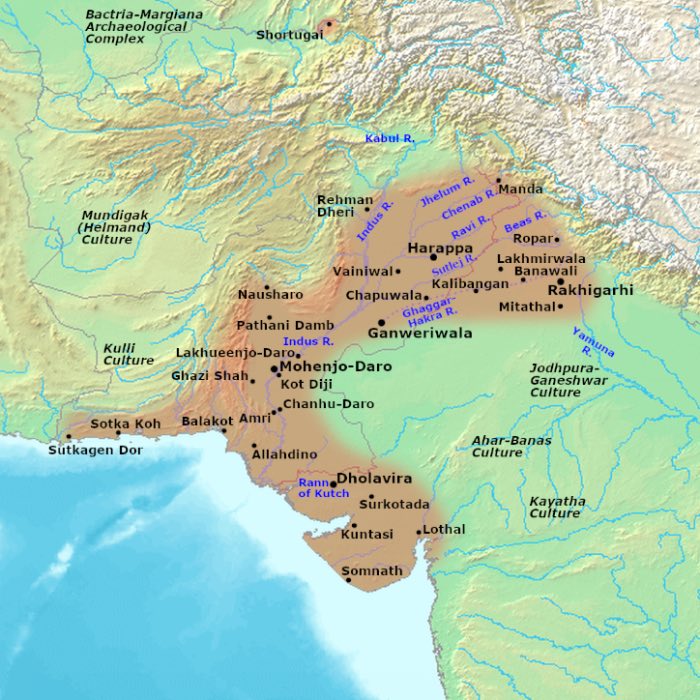
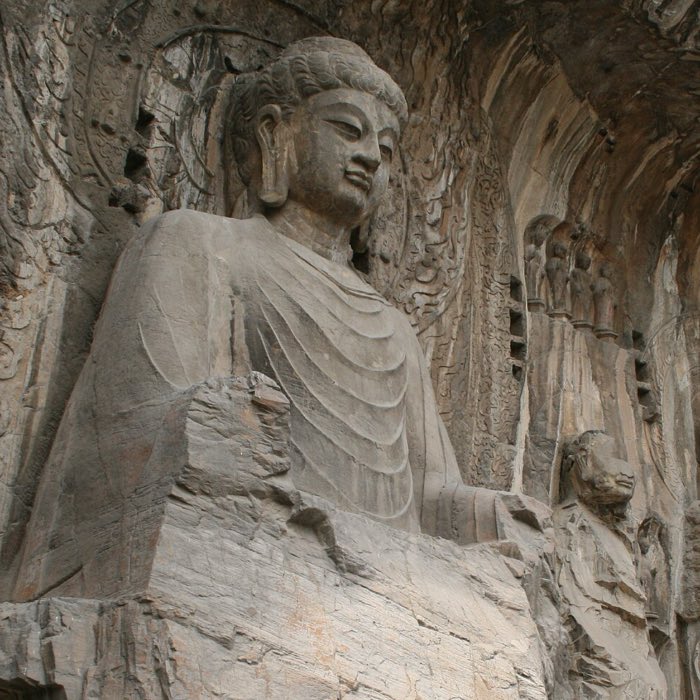
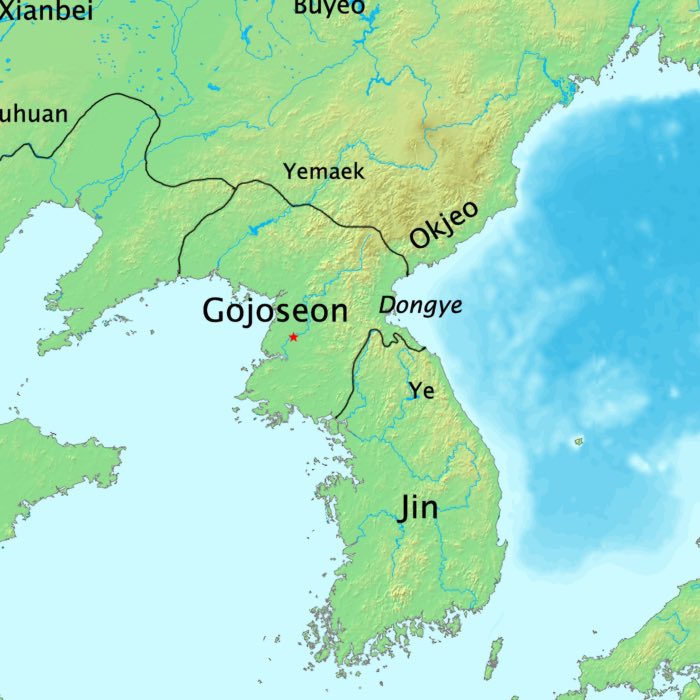

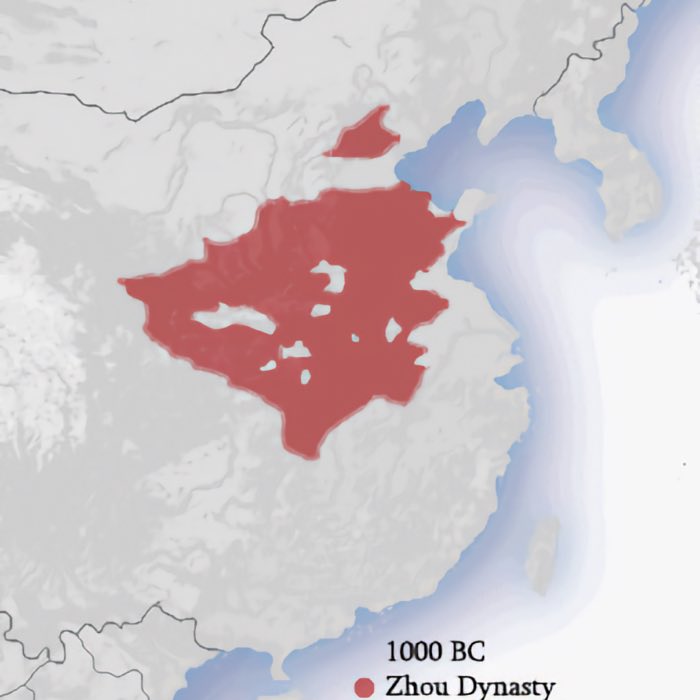

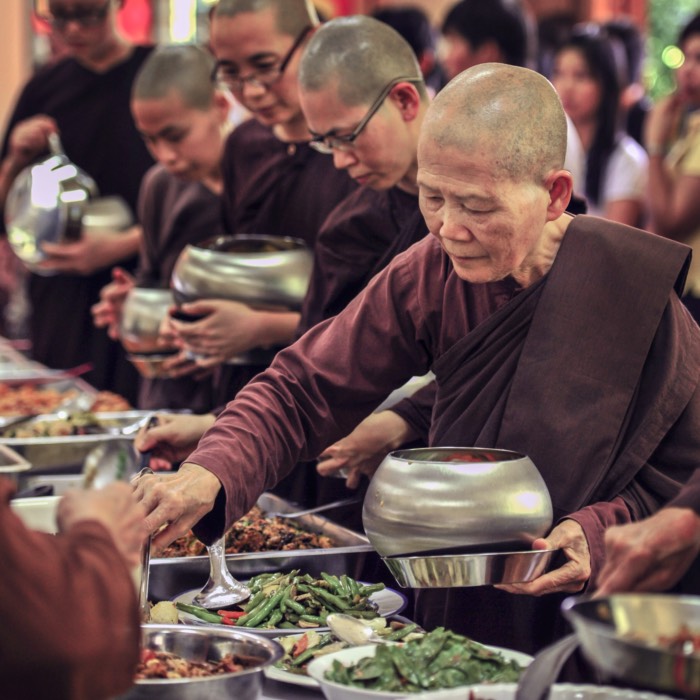
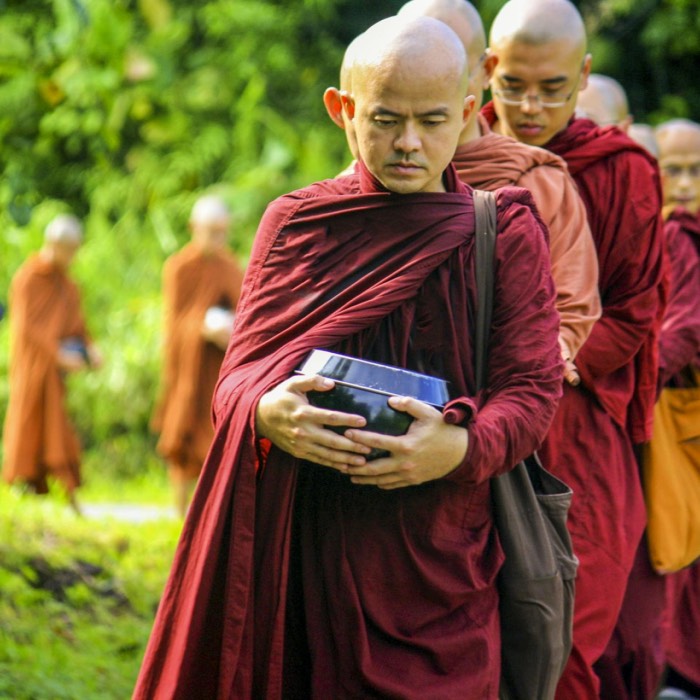




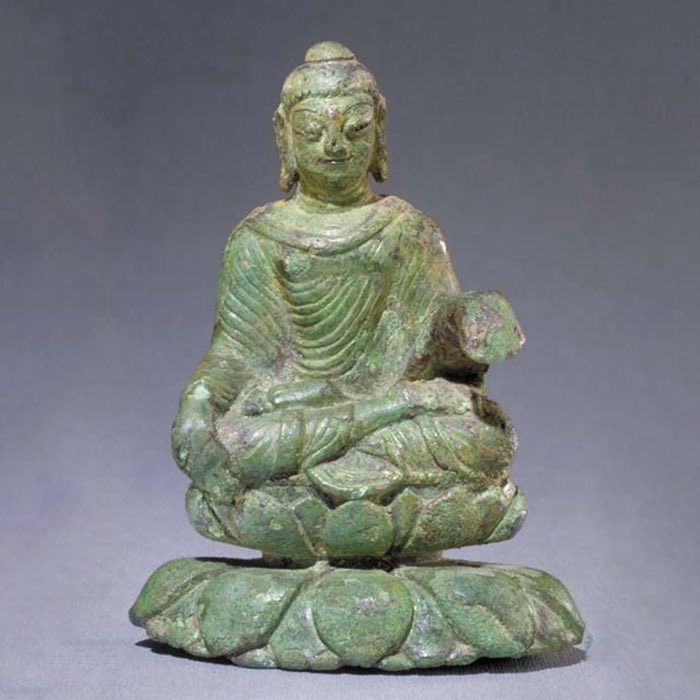
comments